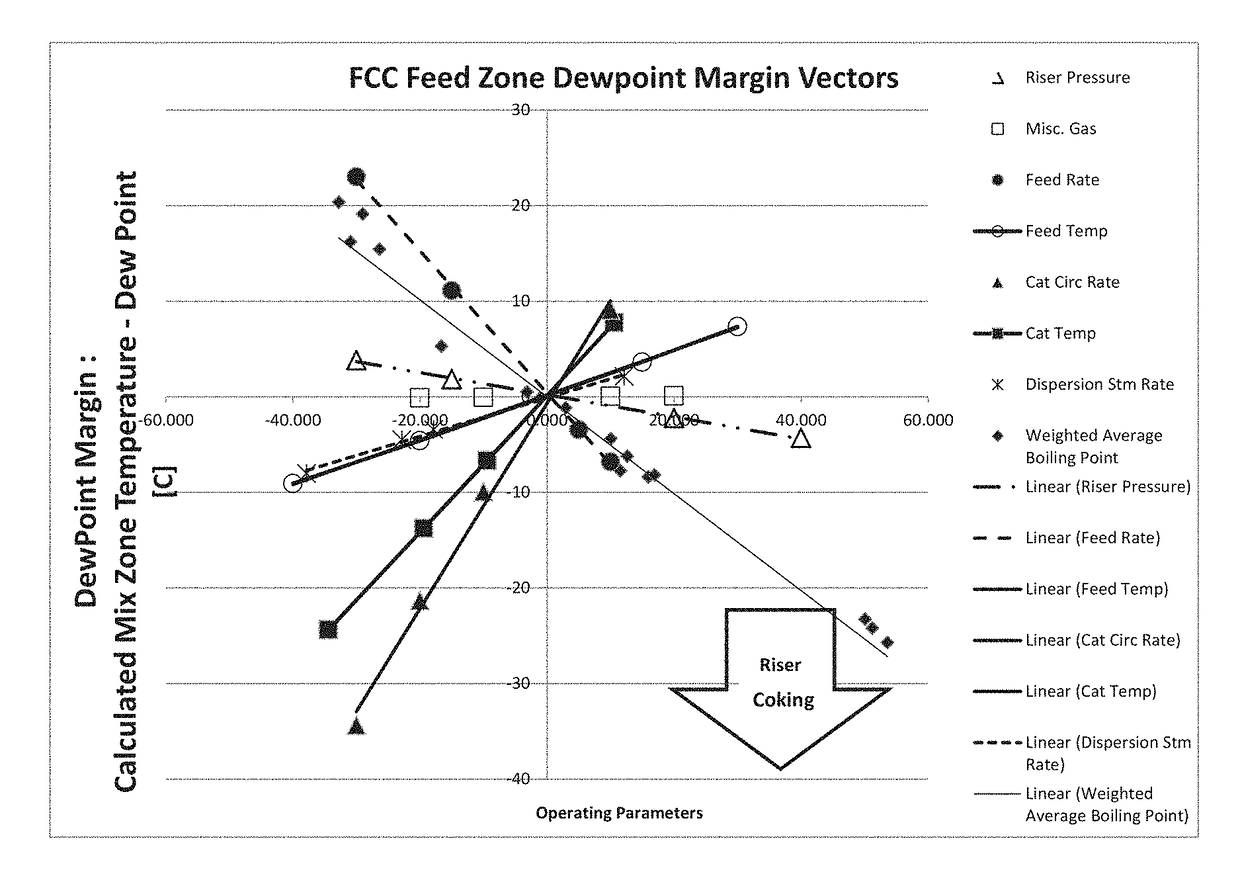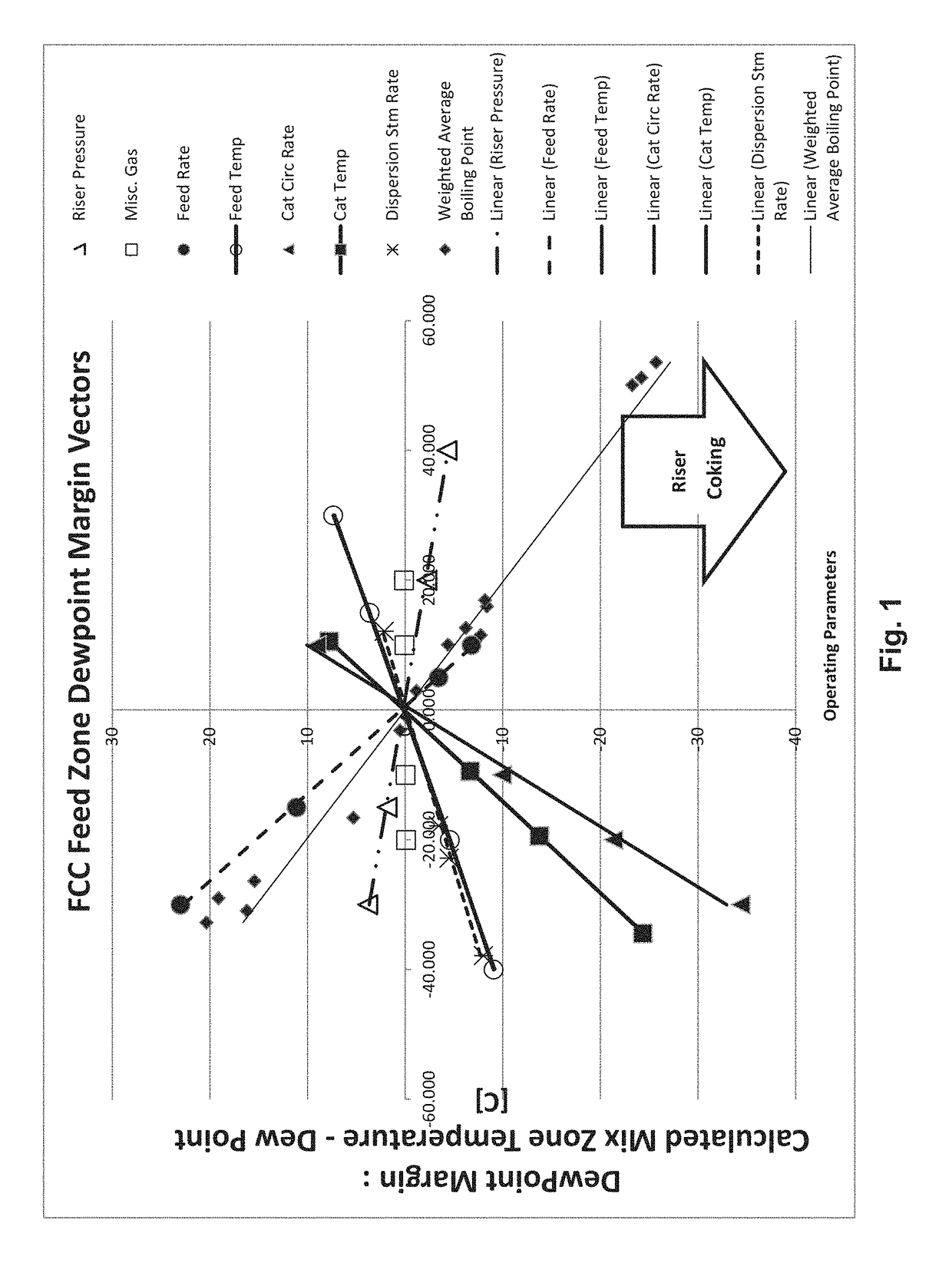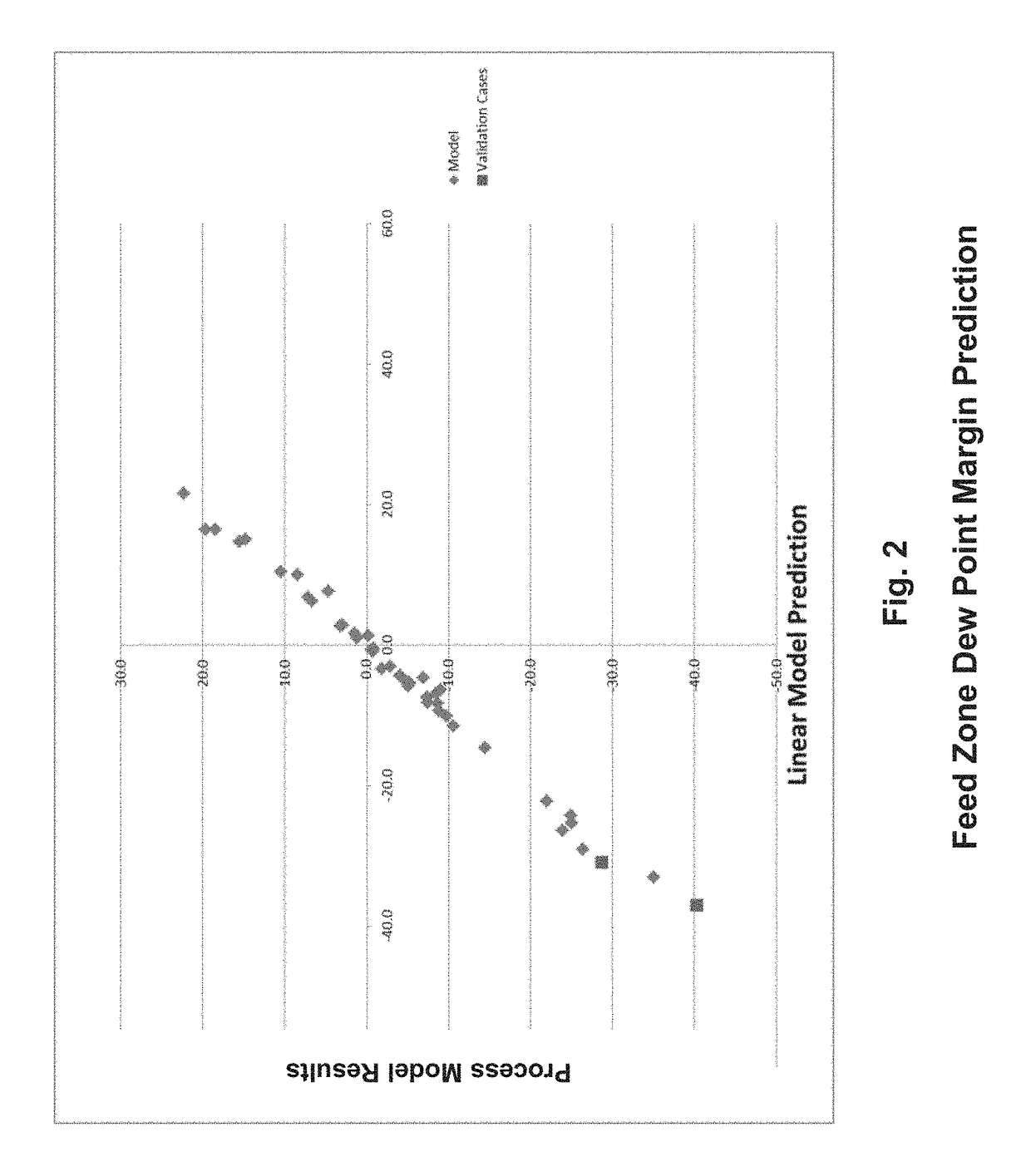Reduction of coking in FCCU feed zone
a coke and feed zone technology, applied in the field of coke reduction in fccu feed zone, can solve the problems of unit shut-down for cleaning, attendant difficulties, unit shut-down, etc., and achieve the effect of minimizing the formation of coke deposits in the riser and elsewhere in the uni
- Summary
- Abstract
- Description
- Claims
- Application Information
AI Technical Summary
Benefits of technology
Problems solved by technology
Method used
Image
Examples
Embodiment Construction
[0027]Riser coking is known as unique problem of FCC units that process heavier feeds, either gas oils with higher end points, resids as in Resid Catalytic Cracking or mixtures of gas oils and resids and has a lower reaction temperature in general in order to control the energy required for vaporization of the feed (approximately 70% of the energy consumed in the FCCU is for vaporization of the feed and this proportion is, of course, higher temperature for the less volatile feeds). Residual feeds, typically with end points above 540° C. (about 1000° F.) e.g. with at least 10 or 20 wt. pct. boiling above 450° C. (about 840° F.), not only require the greatest energy input for vaporization but also pose the greatest likelihood of incomplete vaporization and resultant riser coking. Industrial experience also recommends using more injection steam with the heavier feeds to assist in minimizing feed oil droplet size for improved contacting between the feed and hot catalyst from the regener...
PUM
| Property | Measurement | Unit |
|---|---|---|
| temperature | aaaaa | aaaaa |
| temperature | aaaaa | aaaaa |
| temperature | aaaaa | aaaaa |
Abstract
Description
Claims
Application Information
 Login to view more
Login to view more - R&D Engineer
- R&D Manager
- IP Professional
- Industry Leading Data Capabilities
- Powerful AI technology
- Patent DNA Extraction
Browse by: Latest US Patents, China's latest patents, Technical Efficacy Thesaurus, Application Domain, Technology Topic.
© 2024 PatSnap. All rights reserved.Legal|Privacy policy|Modern Slavery Act Transparency Statement|Sitemap



